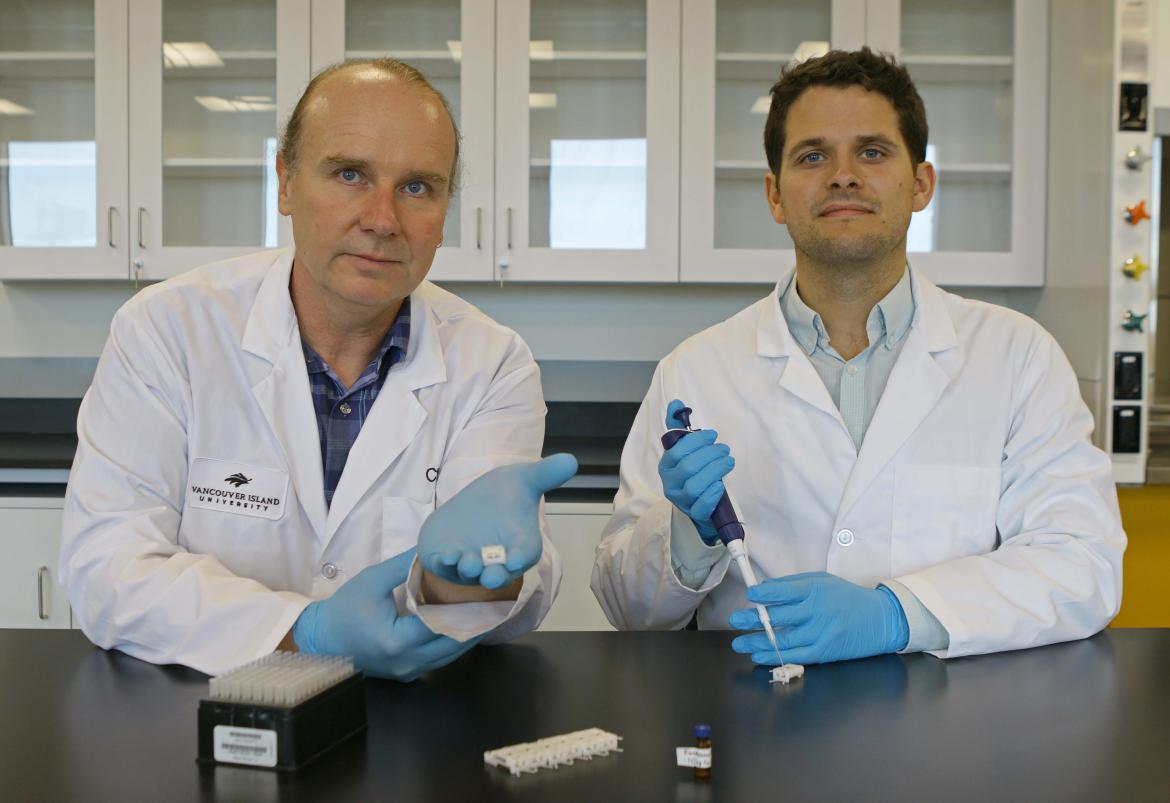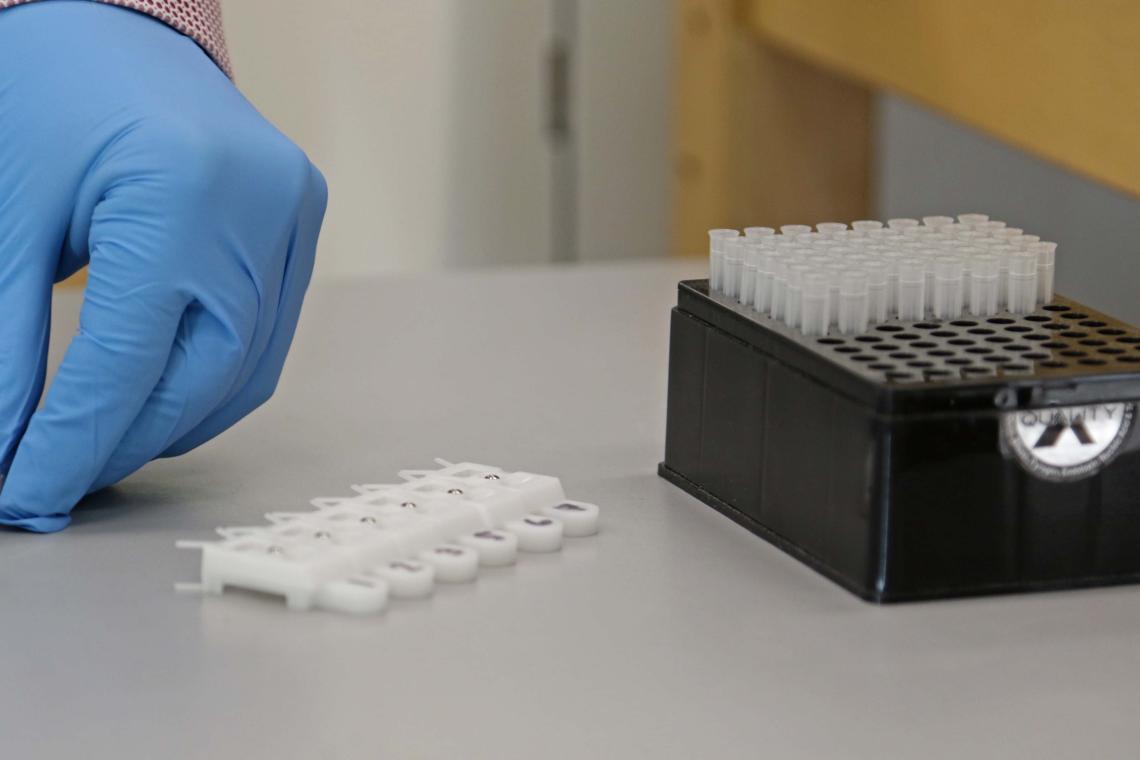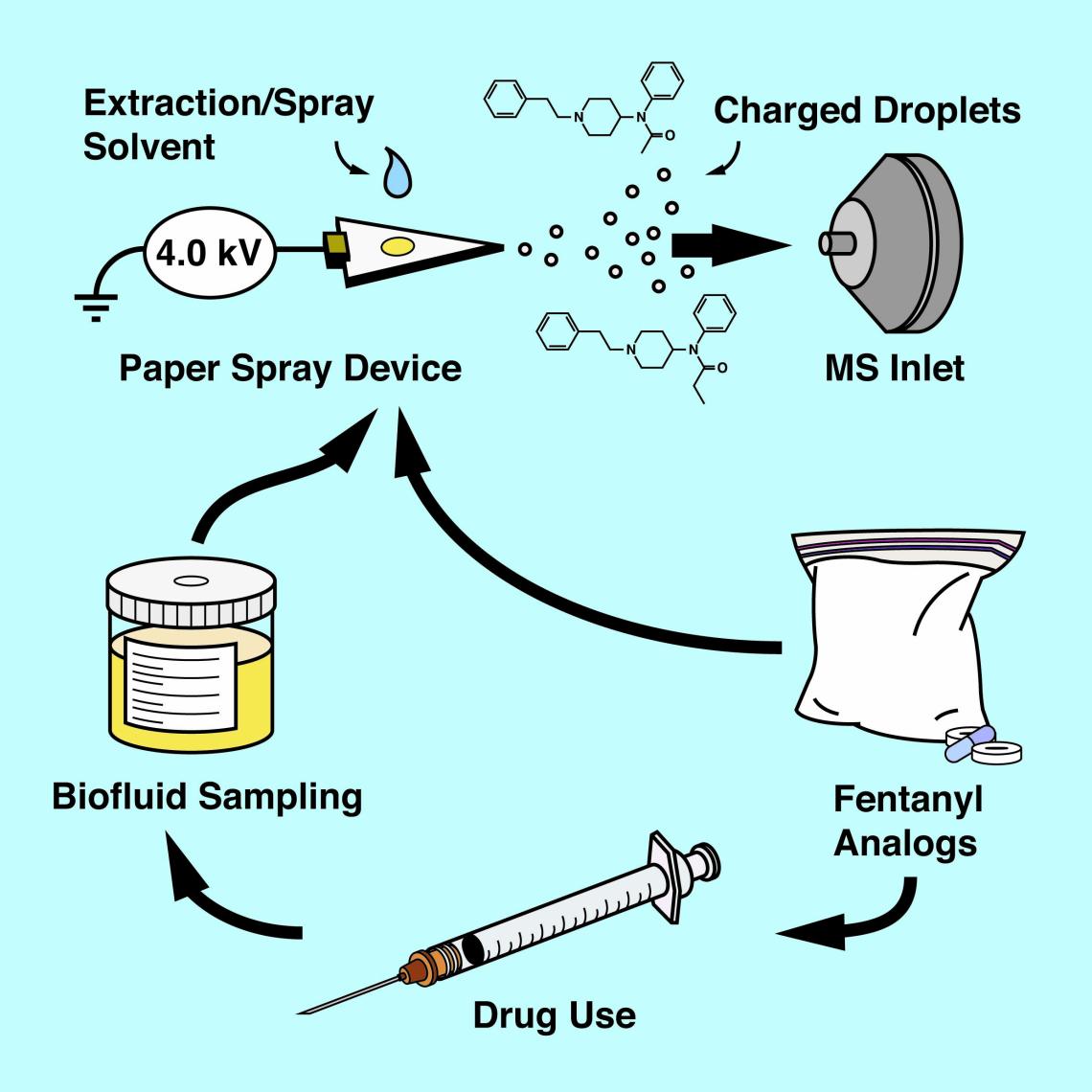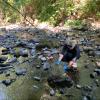
Applied Environmental Research Laboratories researchers Dr. Chris Gill, left, and PhD candidate Scott Borden are developing a drug-testing method that could save lives.
October 29, 2018 - 2:00pm
Researchers at Vancouver Island University (VIU) are zeroing in on a drug-testing method that could dramatically slow a burgeoning epidemic of opioid overdoses and potentially save countless lives.
Led by Dr. Chris Gill, a VIU Chemistry professor and Co-Director of the Applied Environmental Research Laboratories (AERL), the research uses mass spectrometry-based methods to overcome key limitations of existing drug tests for toxic substances, such as fentanyl or carfentanil. The new method would arm users with immediate, accurate information about the potential risks related to the exact contents of their drug product, empowering them to make safer choices.
“The first efforts at drug testing have provided some useful but limited information,” says Dr. Paul Hasselback, Medical Health Officer with Island Health. “They have identified the areas where improvement needs to be made – precision, timeliness and operation with limited training. The work at VIU has the potential to deliver on these three very important qualities to help save lives.”

Whereas sampling a substance and having it analyzed at a lab returns results in a day or two at best, Gill says his paper-spray mass spectrometry testing method will yield results almost immediately. And those results are both accurate and informative.
A positive test from existing methods, such as test strips or IR spectroscopy, doesn’t necessarily distinguish between a wide range of toxic substances, nor does it indicate their amount. Gill says his test detects 0.0003 per cent levels of toxic substances in a 1 mg sample, and can also identity specific substances and their quantities.
“With our test, it’s quite simple to provide both types of information – identification as well as concentration. And the kicker is that we can do it quickly,” says Gill, who has already published two papers on the methodology in peer-reviewed journals and expects a third publication this fall. It was chosen as a featured, front cover article in Rapid Communications in Mass Spectrometry.
Developed with partners at LifeLabs and Island Health, and in consultation with the BC Centre on Substance Use, the method uses technology already in use for other applications in direct chemical detection, and applies it to harm-reduction drug testing. With lab-based trials an overwhelming success, the next step is to purchase compact mass spectrometer systems, modify them for this specific purpose, and implement the approach in on-site drug testing for clinical harm reduction at Overdose Prevention Sites (OPS) in Nanaimo and Vancouver.
 However, getting to this stage requires significant funding – which AERL team members are actively seeking – as well as unique expertise. The research team has more than 13 years’ experience in developing and successfully implementing mobilized mass spectrometry systems for direct environmental measurements in the field, and is confident that the mobilized drug testing methods are achievable.
However, getting to this stage requires significant funding – which AERL team members are actively seeking – as well as unique expertise. The research team has more than 13 years’ experience in developing and successfully implementing mobilized mass spectrometry systems for direct environmental measurements in the field, and is confident that the mobilized drug testing methods are achievable.
While $500,000 would be enough to get a trial underway at one or two fixed locations within six months, Gill says additional funding would facilitate the work required to drastically reduce the size of the instrumentation, further simplify its operation, and get it into wider use in community based testing sites or even in mobile harm-reduction units. The potential of mobile harm reduction units would be a significant step towards reaching drug users not currently accessing OPS services.
“We know what we need, we know how to adapt it and we know it will work,” Gill says. “I’m convinced this is the simplest and yet the most elegant solution. I know we can save some lives.”
-30-
MEDIA CONTACT:
Jenn McGarrigle, Communications Officer, Vancouver Island University
P: 250.740.6559 | C: 250.619.6860 | E: Jenn.McGarrigle@viu.ca | T: @VIUNews
Tags: Research






